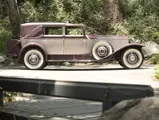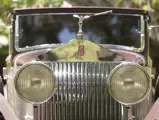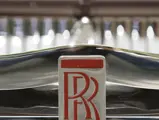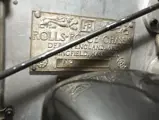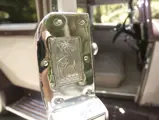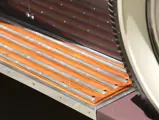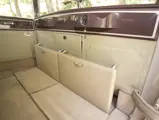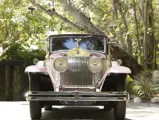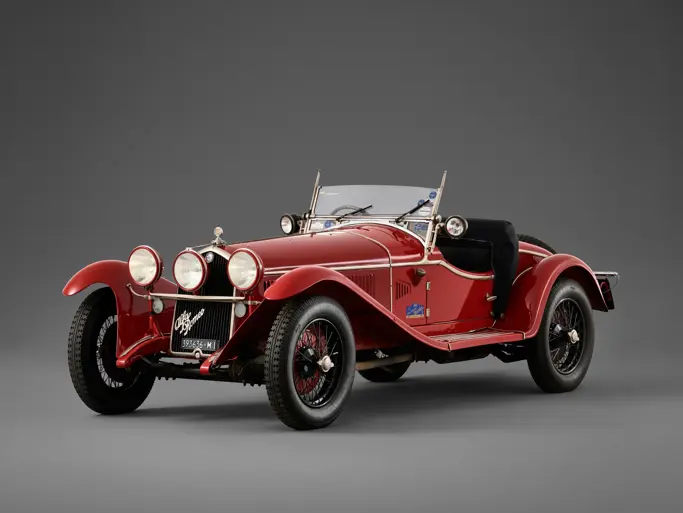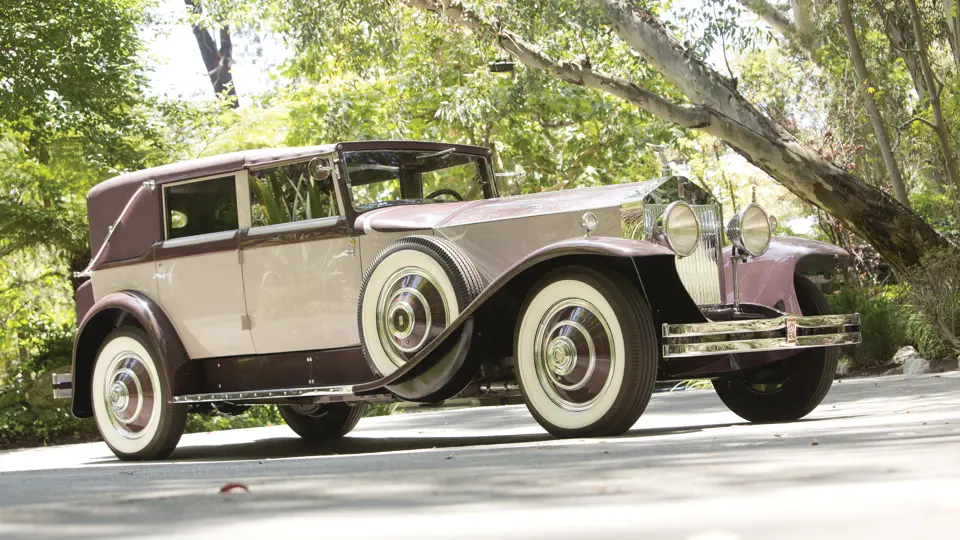
1931 Rolls-Royce Phantom I Imperial Cabriolet by Hibbard & Darrin
{{lr.item.text}}
$126,500 USD | Sold
{{bidding.lot.reserveStatusFormatted}}
- Offered from a private collection
- An American-built Rolls-Royce with French custom coachwork
- Originally owned by vaudeville magnate Reed A. Albee
- Formerly the property of Frank Cooke and Douglas Watson
- Shown at the Pebble Beach Concours d’Elegance
Body Style 9043. 40/50 bhp, 468 cu. in. OHV inline six-cylinder engine, three-speed manual transmission, solid front axle with semi-elliptic leaf springs, live rear axle with cantilever leaf spring platform suspension, and four-wheel servo-assisted brakes. Wheelbase: 146.5 in.
Thomas Hibbard and Howard Darrin were part of the Lost Generation, drifting to Paris alongside the likes of F. Scott Fitzgerald and Ernest Hemingway after World War II. While other individuals like them turned pen to paper and produced literature, Hibbard and Darrin expressed their art on automobile chassis; their designs for Mercedes-Benz, Packard, Stutz, Hispano-Suiza, and, of course, Rolls-Royce, were no less individual, memorable, and ahead of their time.
Among the creations produced at the duo’s shop on the periphery of Paris were 35 bodies for Rolls-Royce Phantom I chassis that were built at the company’s then-active American factory in Springfield, Massachusetts. These bodies were built “in the white,” finished without paint or trim, and completed by Brewster & Company, of Long Island City, New York, for Rolls-Royce’s Custom Coach Work program, in the final finish selected by the original owner. The result was a car with American ingenuity, British craftsmanship, and suave European lines.
The Imperial Cabriolet offered here was a near twin to the coachwork built for William Randolph Hearst’s Duesenberg, and it was similar to the Hibbard & Darrin design, which Brewster appropriated for its own Trouville. According to research that previous owner Douglas Watson conducted with Thomas Hibbard himself in the early 1970s, the body was originally built in France in 1928 for another chassis, which was returned nearly four years later. It was then removed, modified with a fixed convertible roof, and fit to this Phantom I chassis, number S112PR, for Reed A. Albee, member of the prominent Keith-Albee family that owned several of the East Coast’s most opulent theaters and the adoptive father of noted American playwright Edward Albee.
The car was delivered to Albee in New York City on June 28, 1932, and it no doubt looked right at home arriving to the latest vaudeville spectacular at one of his “palaces.” He kept it for eight years, and it was eventually acquired from well-known Rolls-Royce mechanic Frank Cooke by Mr. Watson, who, between 1973 and 1983, exhaustively restored it to original condition, with considerable input from Hibbard, who regularly visited the Watson shop, helping to recreate missing original trim. The car was pictured, in Mr. Watson’s ownership, in John Webb deCampi’s Rolls-Royce in America.
In the present owner’s care, the restoration was freshened, with both body and frame stripped to bare metal and professionally repainted; the body was painted in a striking two-tone lavender and mauve. While the chauffeur’s compartment and padded top were newly reupholstered in leather, the Rolls-Royce retains its original, luxe cloth rear compartment upholstery, which remains in excellent and outstanding overall condition. Mechanically, the car was found to be in excellent condition, thanks to Mr. Watson’s fine work, and was left alone, aside from detailing.
The car presented well on the lawn at the Pebble Beach Concours d’Elegance in 2006, where it was well received. It continues to present beautifully today as a striking example of a truly continental automobile.

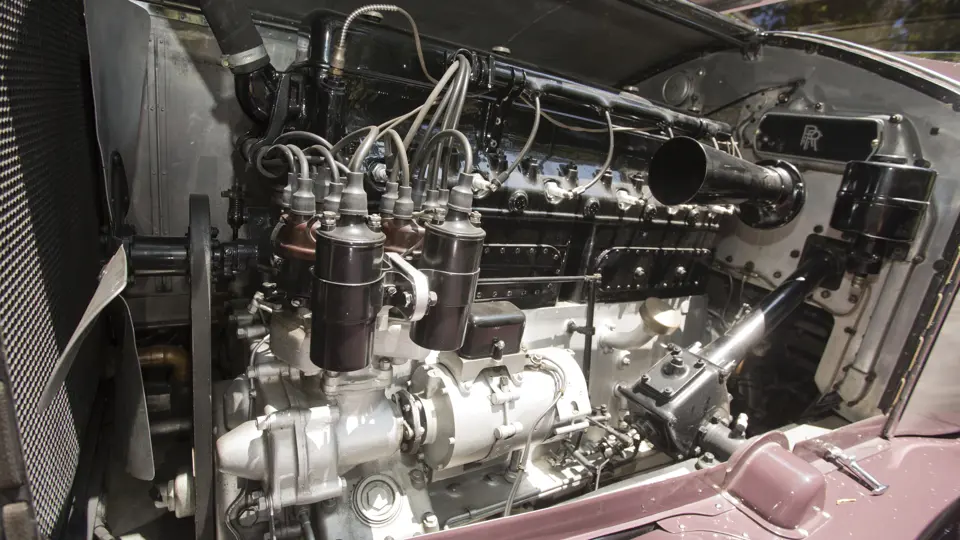



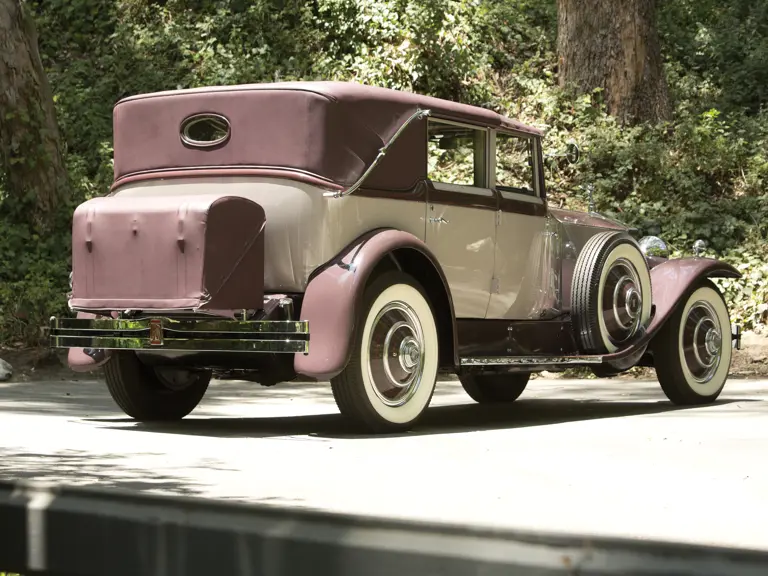
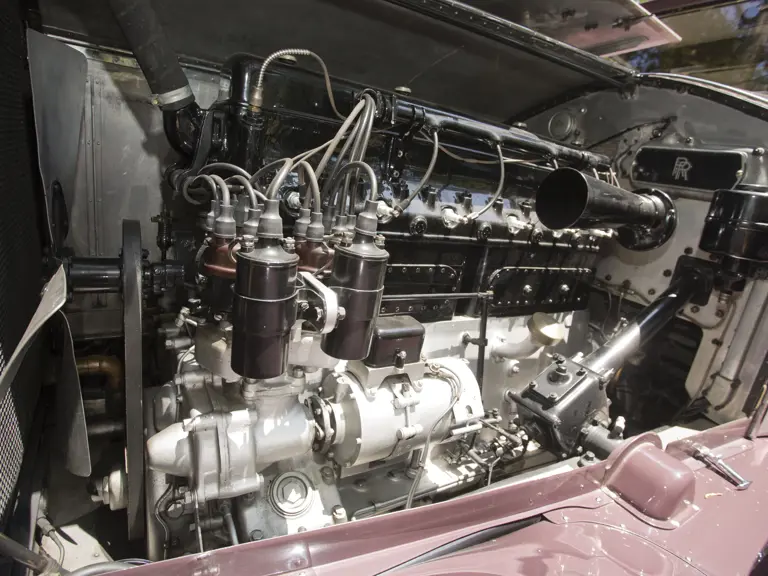



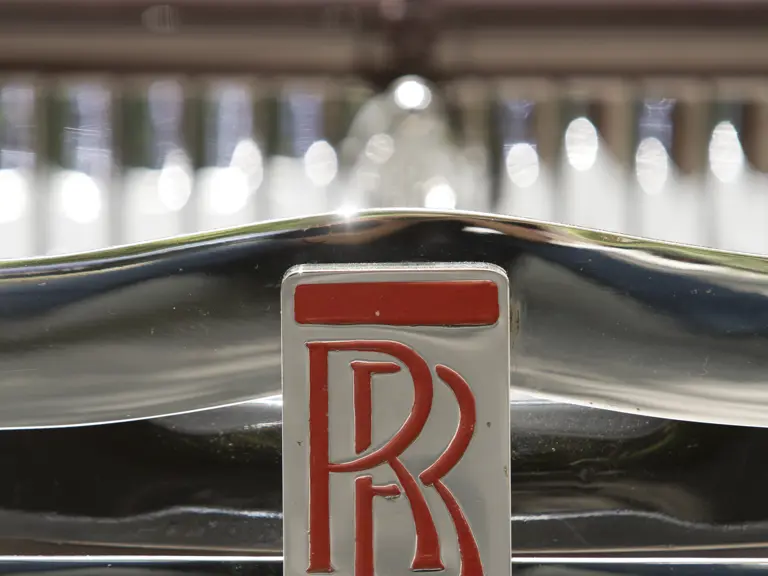
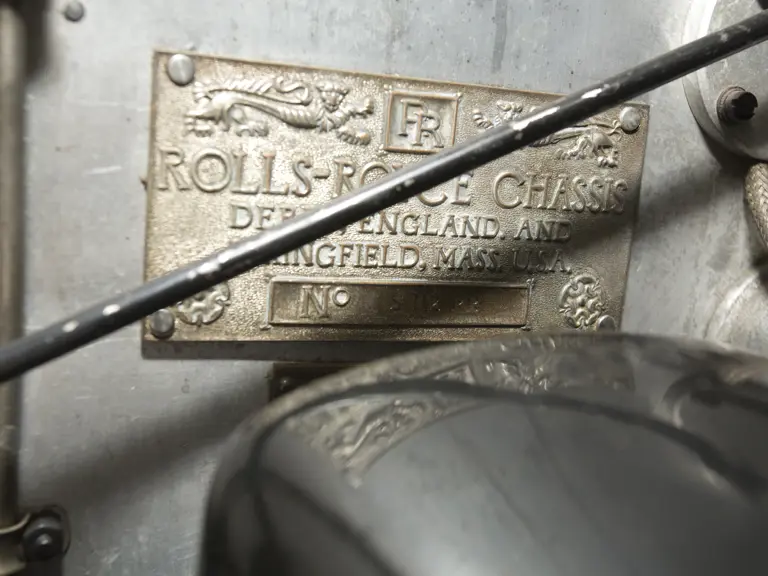

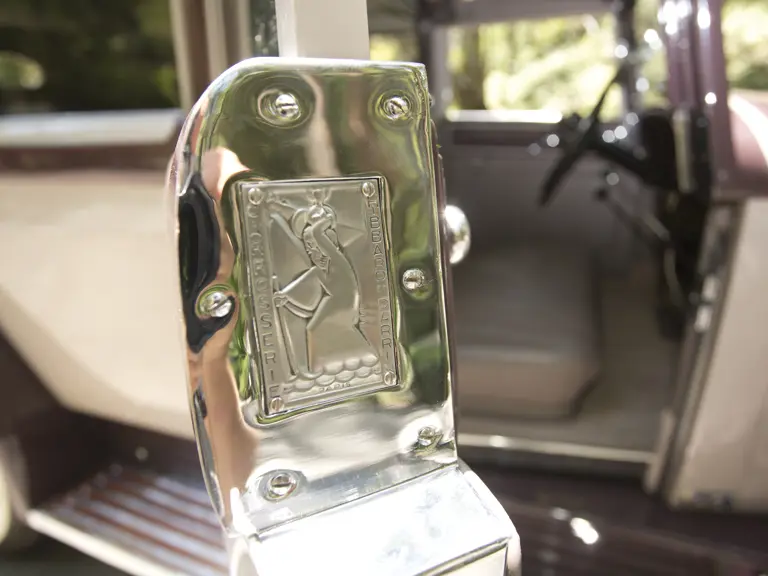
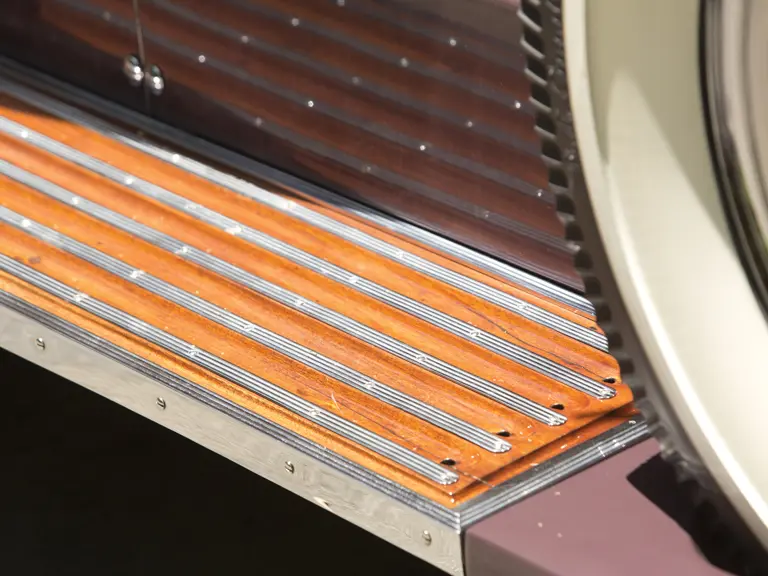

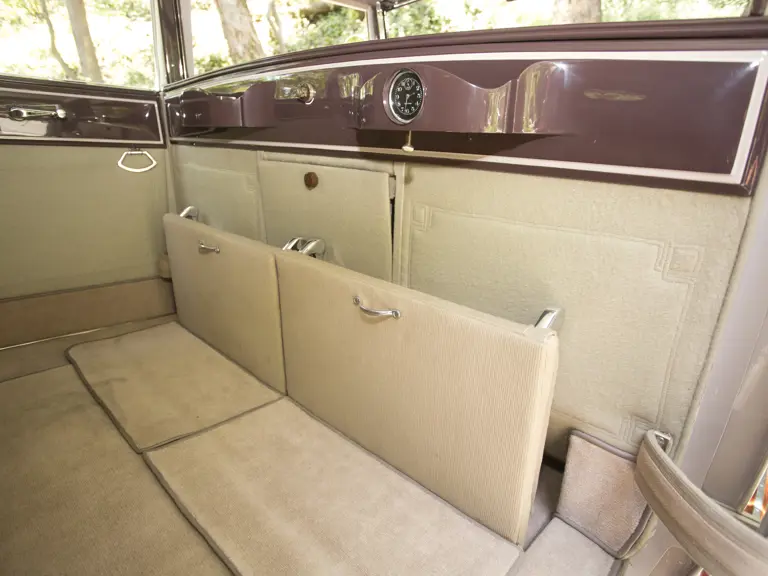
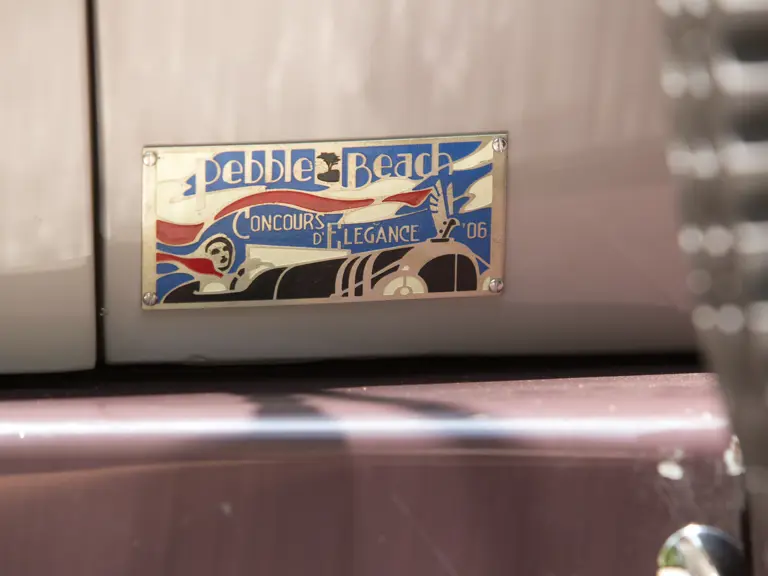


 | Plymouth, Michigan
| Plymouth, Michigan



